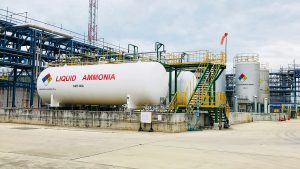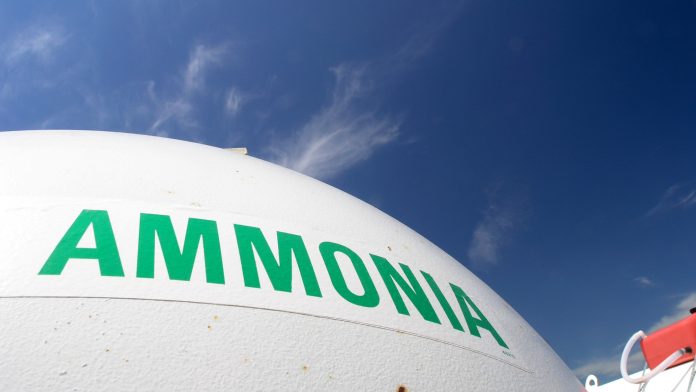Researchers have discovered a compound that offers a safer and easier way to store ammonia, paving the way for a practical hydrogen economy.
Researchers at the RIKEN Center for Emergent Matter Science (CEMS) have found a compound that is set to make ammonia storage safer and easier.
The discovery, published in the paper ‘Chemical storage of ammonia through dynamic structural transformation of a hybrid perovskite compound,’ also makes it possible for hydrogen to be safely and conveniently stored.
The result should help pave the way to a decarbonised society with a practical hydrogen economy.
Ammonia’s role as a hydrogen carrier
For society to transition to hydrogen-based energy, finding a safe way to store and transport hydrogen is crucial. By itself, the element is highly combustible.
One hydrogen storage method is storing it as part of another molecule and extracting it as needed.
Ammonia (NH3) is a good hydrogen carrier because three hydrogen atoms are packed into each molecule. This means that by weight, almost 20% of ammonia is hydrogen.
What is the current problem with ammonia storage?
Ammonia is a highly corrosive gas making it difficult to store and use.
Current ammonia storage methods involve liquefying it in pressure-resistant containers at temperatures well below freezing.
Ammonia can also be stored at room temperature and pressure in porous compounds.
However, storage capacity is low, and the ammonia cannot always be retrieved easily.
The new ammonia storage method allows easy and complete retrieval
The new study reports the discovery of a perovskite, a material with a distinctive repetitive crystal structure. This material is good for ammonia storage as it allows for the easy retrieval of the element at relatively low temperatures.
The team, led by Masuki Kawamoto at RIKEN CEMS, focused on the perovskite ethylammonium lead iodide (EAPbI3).
They discovered that at room temperature, its one-dimensional columnar structure undergoes a chemical reaction with ammonia. During this reaction, it dynamically transforms into a two-dimensional layered structure called lead iodide hydroxide (Pb(OH)I).
Through chemical conversion, ammonia is stored within the layered structure as a nitrogen compound.
This ammonia storage method is much cheaper than liquefication at -33°C in pressurised containers.
Most importantly, the process to retrieve the stored ammonia is just as simple.
“To our surprise, ammonia stored in ethylammonium lead iodide could be easily extracted by heating it gently,” said Kawamoto.
The stored nitrogen compound undergoes a reverse reaction at 50°C under vacuum and returns to ammonia. This temperature is a lot lower than the 150°C that is required to extract ammonia from porous compounds.
The new compound used for ammonia storage is therefore an excellent medium for handling corrosive gases in a simple and cost-effective process.
Additional bonuses of the new ammonia storage method
After returning to the one-dimensional columnar structure, the perovskite can be reused. This allows the ammonia to be repeatedly stored and extracted.

As well as this, the normal yellow compound became white after the reaction.
Kawamoto stated: “The compound’s ability to change colour when storing ammonia means that colour-based ammonia sensors can be developed to determine the amount of ammonia stored.”
Future uses for the new storage method
The new storage method has a variety of uses.
In the short-term, the team has developed a safe ammonia storage method that already has multiple uses in society. For example, in fertiliser, pharmaceuticals, and the textiles industry.
“In the long-term,” said co-author Yoshihiro Ito of RIKEN CEMS, “we hope that this simple and efficient method can be a part of the solution for achieving a decarbonised society through the use of ammonia as carbon-free hydrogen carrier.”
In the future, the research will help achieve the 2016 Sustainable Development Goals set by the UN.









